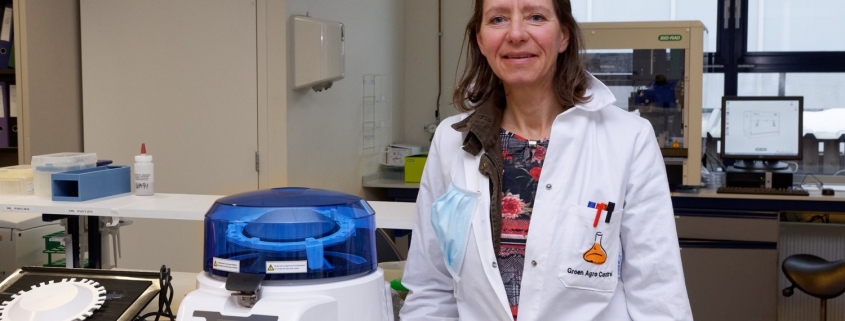Underground water system; we know a lot (and a lot we don’t)
Ines van Marrewijk of Groen Agro Control likes to get to the bottom of unusual questions from growers. If there is a solution to a grower’s problem, Ines knows where to find it.
Bacteria unknown
The search for the right methods to measure bacteria in the water requires attention. “Are you looking for a specific pathogenic species such as Agrobacterium or for generally occurring bacteria?” explains Ines. “For example, it could be growth of anaerobic bacteria at low oxygen levels. This is not often tested and should be specifically asked for. Anaerobic and aerobic bacteria surround themselves with a layer of slime that causes biofilm in pipes, among other things. The addition of cleaning agents prevents most biofilm in the pipes themselves. But in dead ends, couplings or rough parts, fouling and germs often remain persistent. A change of composition in water can sometimes cause the growth of bacteria and also yeasts to suddenly ‘explode’.”
What exactly that is for bacteria is often not immediately clear. “An example: For many years, Groen Agro Control named certain root growth ‘beaded roots’ and yet another image ‘thick roots’. Both appear to have a bacterial cause. It is not yet known that many bacteria can be harmful to plant and/or root growth. We now know more, but by no means everything. The bacterium Ralstonia was also such an ‘unknown factor’ when it suddenly turned up in roses and anthurium, which had not previously been described as a disease in those crops worldwide.”
DNA sequence
One of the advantages that Groen Agro Control has recently acquired to give the identification of bacteria a boost is the new technique of Next Generation Sequencing. By means of DNA sequencing, different variants within a virus, bacteria or fungus can be distinguished. In this way, different genetic variants of viruses, for example, can be better monitored. “Or we can do quality control on microbiological products. This way you can check that the product only contains what it should. The genetic information from drain water or roots can be used to map the microbiological composition. Both beneficial and harmful bacteria, fungi and viruses are detected.
By using sequencing in this way, you don’t focus on just one organism, but immediately see ‘all the micros’ in such a sample. “That sequencing machine has initially been purchased for virus research, after which we will see what has priority. For each purpose, the method will first have to be validated so that high-quality results are obtained from practical samples.”
Solving problems
At Groen Agro Control, the focus with micro is on monitoring cultivation and also on solving problems in the sector. For example, we prevent growth problems in cultivation and at growers through regular analysis of the water. “If you measure a few hundred thousand bacteria per millilitre in ‘clean water’ via germination numbers, that is really too much, certainly for cuttings and seedlings. Then the bacteria get in the way of good rooting, possibly resulting in growth damage.”
Improving resilience is also a key to better water that the company holds. “The magic word ‘resilient’ in analyses requires looking at both good and harmful micros. With more extensive germ counts, you not only get to see the general fungi and bacteria in the water, but also the germ counts of plant diseases and, if desired, of benign fungi in package ‘Germ Count Resilient’.
“We then look not only at pathogens but also at antagonists – fungi and bacteria that help plants rather than hinder them, such as Trichoderma. You have to do such measurements at a certain frequency to get a good picture of the situation on a farm. As with a UV disinfector, it is not a question of measuring once, you have to keep monitoring.”
Water and ToBRFV
Finally, Ines zooms in on the connection between water and ToBRFV or other water-borne viruses. According to her, this is still quite a blind spot on farms, mainly because of the complex water system. In principle, water is not the most dangerous factor in the spread of the dreaded tomato virus. During cultivation, the most dangerous factor is juice-on-juice spread. “But during the crop rotation, the risk of water and the drain water system is much higher. You often have to make a 500% effort in hygiene to get 99% results in virus free. Unfortunately, you sometimes only know whether you have succeeded in removing 100% of the virus after it turns out that the new crop remains clean.”
Hygiene and the establishment of protocols is a specialism of Groen Agro Control and Ines also accompanies growers on the farm because hygiene remains customised work.
For more information: Ines van Marrewijk, productmanager bij Groen Agro Control, Distributieweg 1 – 2645 EG Delfgauw, phone 015 2572511
Publication date:
Author: Annet Breure
© GroentenNieuws.nl


